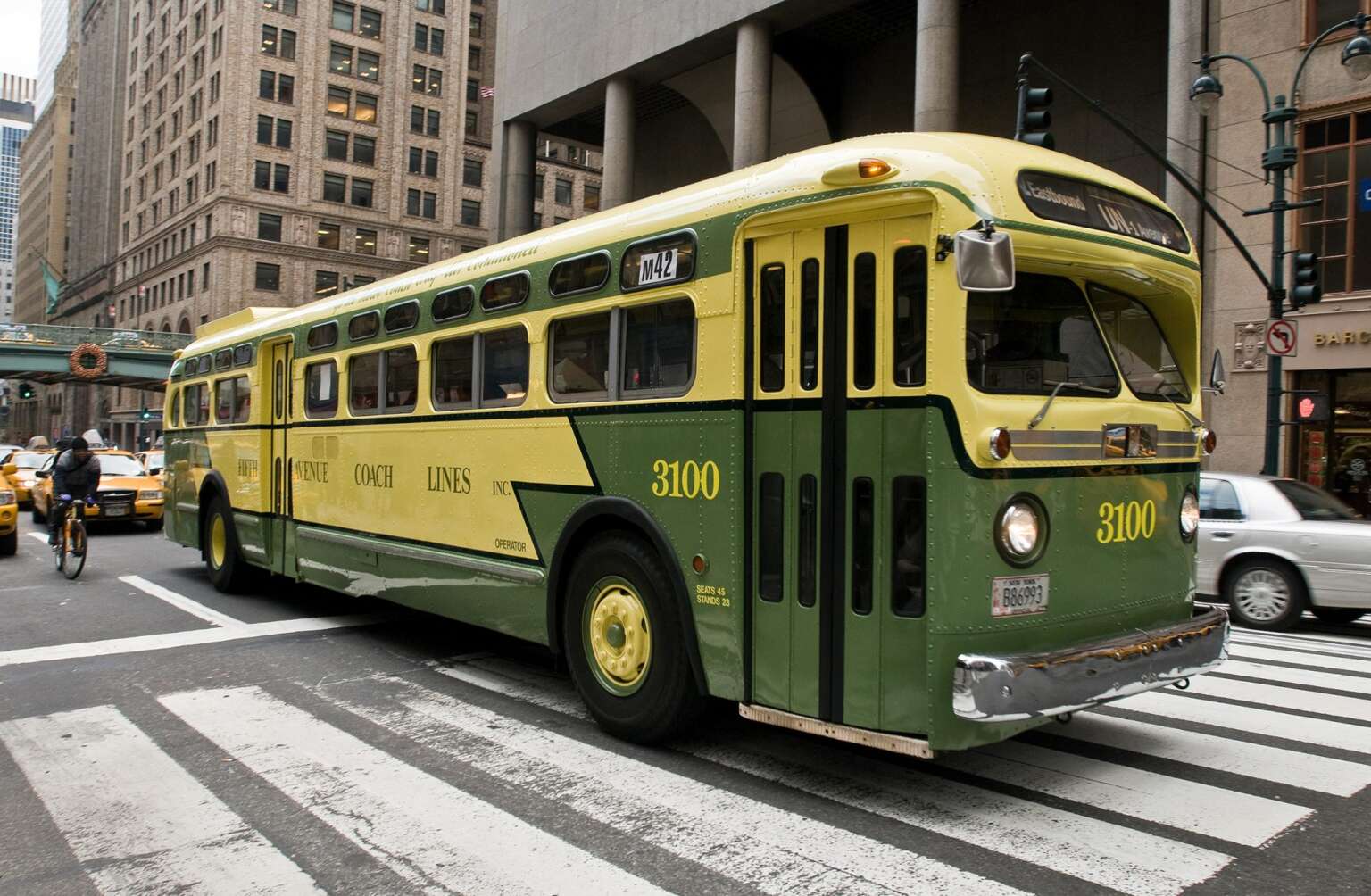Trains, subway and buses are a big part of our lives in the Big Apple. They’re also embedded in our childhood memories of the places we traveled to and the people we went with, and a poignant reminder of times past, providing a visual image of how things have changed.
The Transit Museum’s beloved vintage Bus Festival is returning to New York City this June, and the folks at the MTA are giving New Yorkers an up-close look at some long-retired bus models.
The fourth annual festival will showcase eight vintage buses, all representing more than 90-years-worth of NYC transit history.
Travel back in time as you step onto the buses, enjoy photo ops, check out their pop-up shop, and meet some of the city’s bus drivers responsible for keeping the city on the go. In the years they drove those buses, they’ve seen it and heard it all and are full of fascinating anecdotes.
An added bonus, since the festival takes place at the recently opened Emily Warren Roebling Plaza underneath the Brooklyn Bridge, you’ll also get to take in stunning views of the Manhattan skyline.

The folks at the MTA are bringing out some of the most admired and loved old buses. You can expect to see Betsy, (Bus #1263) which was part of Fifth Avenue Coach’s “1200 series”-100 Yellow Coach “Z-type” buses manufactured in 1930. Fifth Avenue’s 1200-series buses were among the last front-engine double-deck buses made by Yellow Coach. In 1936, the company introduced a new rear-engine, more streamlined design. Bus No. 1263 remained in Manhattan passenger service until 1947 and the Fifth Avenue Coach phased out all double decker operations in 1953. Today, Bus 1263 is the oldest bus in the vintage fleet.
Bus #3100, which served Fifth Avenue and M4 & M5 routes in Manhattan between 1958 and 1968. Manufactured by General Motor Corporation, Bus 3100 was the first air-conditioned bus in the United States. Originally built as an experiment, this model TDH-5106 was purchased by the Fifth Avenue Coach Company about a year after its manufacture. It served Fifth Avenue and M4 & M5 routes in Manhattan between 1958 and 1968. Bus 3100 includes features first introduced in the 1950s, such as a push‑type rear exit door, wrap-around seating in the rear portion, soft seating, and fluorescent lighting.

Bus 9098 is a General Motors TDH-5106. This bus was the first model to sport a two-tone green exterior with a contrasting stripe and was also the first type of bus in New York City equipped with sliding windows, fiberglass seats, and rear door safety exits. This innovative system substituted two panel doors for the accordion-type rear doors and interfaced with the bus braking system.
Founded in 1976, the New York Transit Museum is dedicated to telling and preserving the stories of mass transportation, including everything from engineering feats and the workers who labored in the tunnels over 100 years ago to the ever-evolving technology, design, and ridership of a system that runs 24/7.
Spanning a full city block the museum is housed underground in an authentic 1936 subway station in Downtown Brooklyn and is home to a rotating selection of twenty vintage subway and elevated cars dating back to 1907.
The museum’s Bus Festival will take New Yorkers back in time, for completely free no less, on Saturday, June 10, from 10 a.m. to 4 p.m.
The Museum is located at 99 Schermerhorn St, Brooklyn.












